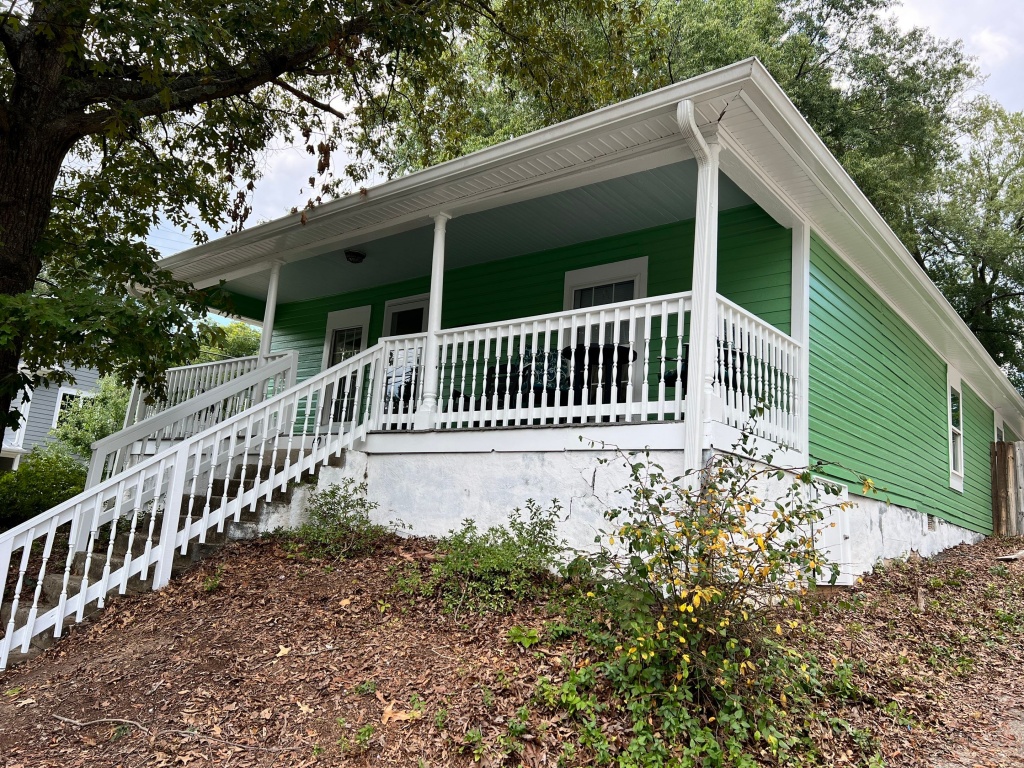- Chalking: The Silent Degrader While many homeowners look for peeling, few realize that a chalky residue on your paint surface is a sign of UV damage. This powdery substance is actually the paint’s binder breaking down, leaving pigment exposed.
- Alligatoring: When Your Paint Resembles Reptilian Skin Named for its resemblance to alligator hide, this pattern of deep, intersecting cracks often occurs when a second coat is applied before the first is fully dry, or when rigid paint is applied over a more flexible surface.
- Nail Head Rust: The Sneaky Structural Indicator Rust stains appearing around nail heads aren’t just unsightly – they’re a sign that moisture is penetrating your paint and potentially compromising your home’s structure.
- Paint Blistering on Sunny Days If you notice small bubbles forming on your exterior paint during hot, sunny weather, it’s a sign that moisture is trapped beneath the paint surface, vaporizing and pushing outward.
- Burnishing: The Touch-Sensitive Paint Failure Areas of your paint that become shiny when rubbed, especially in high-traffic zones, indicate that the paint film is too soft for its application. This is common with low-quality paints in hallways or around doorknobs.
- Surfactant Leaching: The Mysterious Sticky Residue Have you noticed a sticky, sometimes colored substance on exterior painted surfaces, especially after dew or rain? This is surfactant leaching, where components of the paint separate and come to the surface.
- Efflorescence: The Ghostly White Powder While often mistaken for mold, efflorescence is actually salt deposits. It appears when moisture moves through masonry, bringing dissolved salts to the surface. Its presence under paint indicates moisture issues.
- Photooxidation: When Your Paint Changes Color If you’ve noticed your vibrant exterior colors fading unevenly, with shaded areas retaining more color, you’re witnessing photooxidation. This chemical reaction breaks down paint pigments, particularly in oil-based paints.
- Mud Cracking: The Artist’s Texture You Don’t Want Named for its resemblance to dried mud, this occurs when paint is applied too thickly. The surface dries faster than the underlying layers, causing deep, irregular cracks that often extend to the substrate.
- Biological Growth: More Than Just Aesthetics While mold and mildew are common concerns, algae growth on paint, particularly in shaded or moist areas, indicates that your paint’s mildewcides have failed. This can lead to paint degradation and potential health issues.
By recognizing these less obvious signs of paint failure, you can address issues before they lead to more significant damage. Regular inspections and timely intervention can save you time and money in the long run. If you notice any of these signs, it’s time to consult with a professional painting service like Triangle Pro Painting to assess and address the underlying issues.
At Triangle Pro Painting, we’re not just solving today’s paint problems; we’re anticipating and preventing tomorrow’s issues. Whether you’re dealing with a mysterious paint failure or want to upgrade your surfaces, our team is equipped to deliver results that go far beyond a fresh coat of paint. We’re here to enhance your property’s performance, protect your investment, and improve your quality of life.











